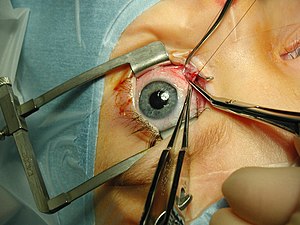We came across this article that reports on a study that was published in a recent issue of the British Journal of Ophthalmology that looked at strabismus surgery rates in children up to the age of 15 from 1963 to 2010 (519,089 children in total). The study found the rate of strabismus surgery in the United Kingdom had dropped from 189 per 100,000 in 1968 to 64 per 100,000 in 2010, a threefold decrease.
According to the article, the major reason was non-surgical treatment approaches:
A switch from surgical to non-surgical treatment approaches, rather than a genuine fall in the prevalence of strabismus was likely to explain a large part of the decline in procedure rates, said the author, who suggested regional variations may reflect differences in strabismus prevalence.
We have not had a chance to read the study, but we have written extensively on this blog about non-surgical alternatives to strabismus surgery:
Jan 23, 2013
The saftey of using anesthesia in surgery on children is questioned by new scientific evidence. Non surgrical alternatives to strabismus (eye muscle) surgery.
Vision therapy or surgery for strabismus (esotropia, exotropia)
Jan 17, 2013
We here at Vision Source Vancouver think that it makes good sense to use effective non-surgical vision therapy to treat strabismus (sometimes called cross eyes, eye turn, esotropia, exotropia). The reason is that strabismus or ...
Alternatives to strabismus surgery - vision therapy is 87% effective
Oct 28, 2012
Vision therapy is a highly effective non-surgical treatment for strabismus that has been validated in numerous studies.
Another risk of strabismus surgery?
Mar 07, 2012
Strabismus - a condition where the eye abnormally turns in or out due to one or more of the eye muscles malfunctioning - is often treated with surgery in which the properly functioning muscle is cut and re-attached so that it ...
How vision therapy worked where strabismus surgery failed
Nov 14, 2012
How vision therapy worked where strabismus surgery failed - the story of Dr. Susan Barry and her book, Fixing my Gaze.
After three unsuccessful strabismus surgeries, patient says enough
Nov 19, 2012
Repeat strabismus surgeries are common and are a reason parents seek non-surgical alternatives like vision therapy. ... Vision Therapy is an effective alternative to strabismus surgery. Here is a recent comment by a reader ...


